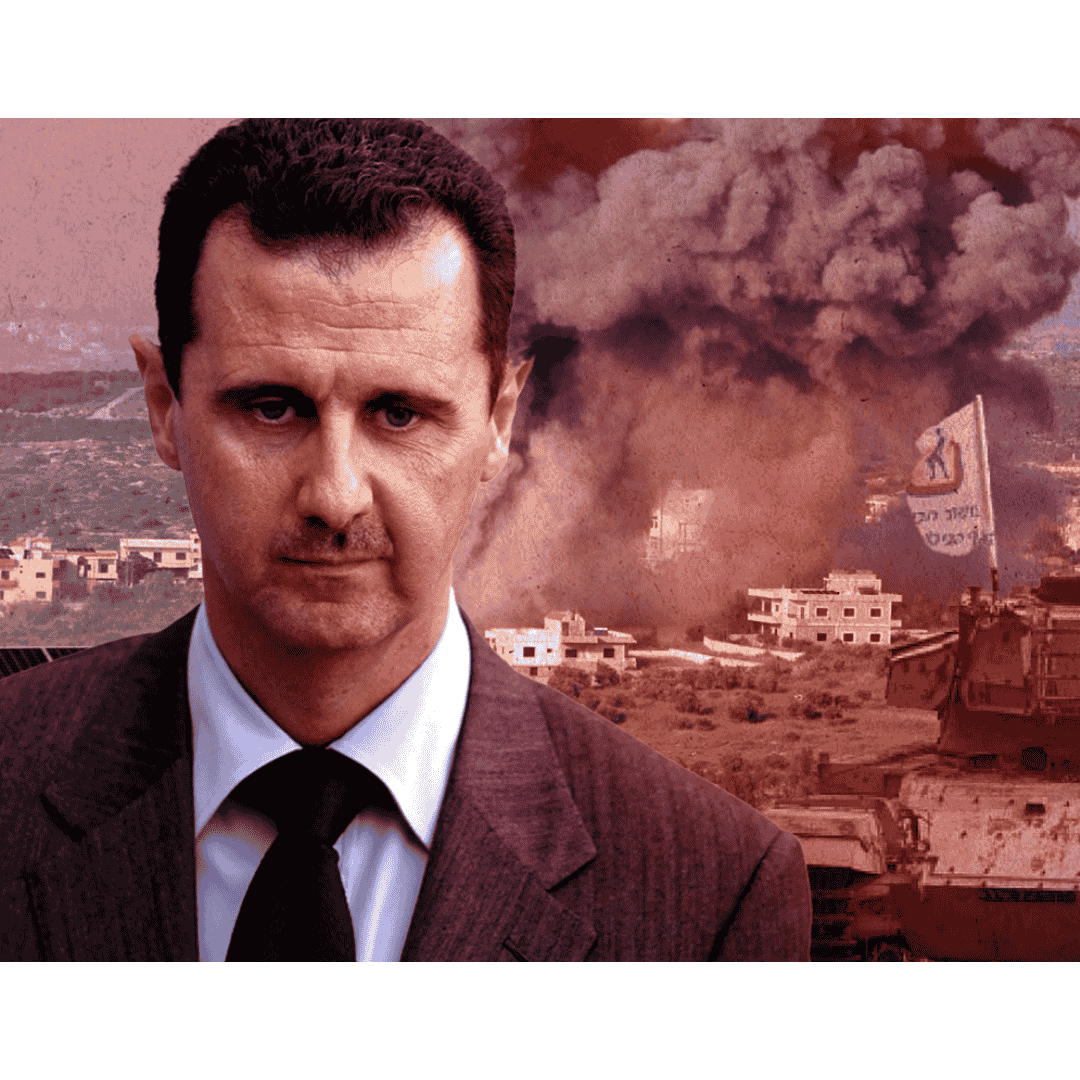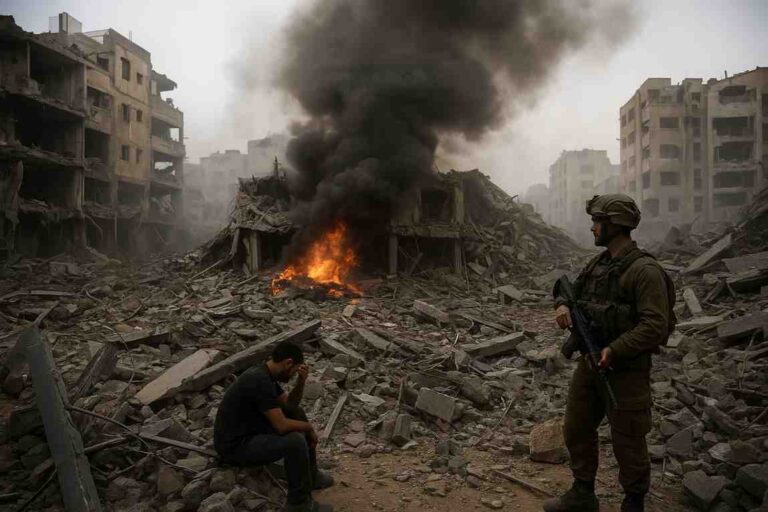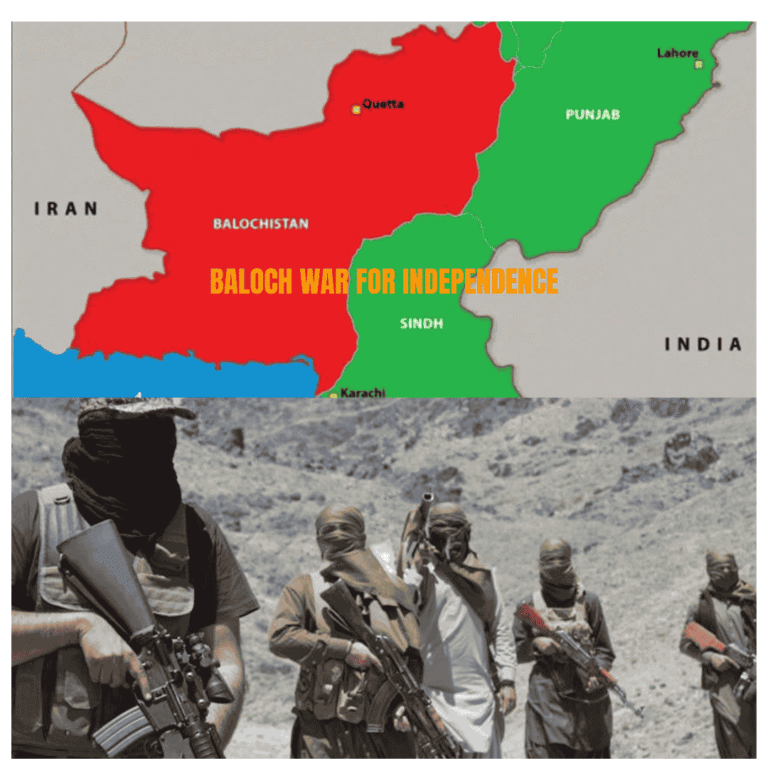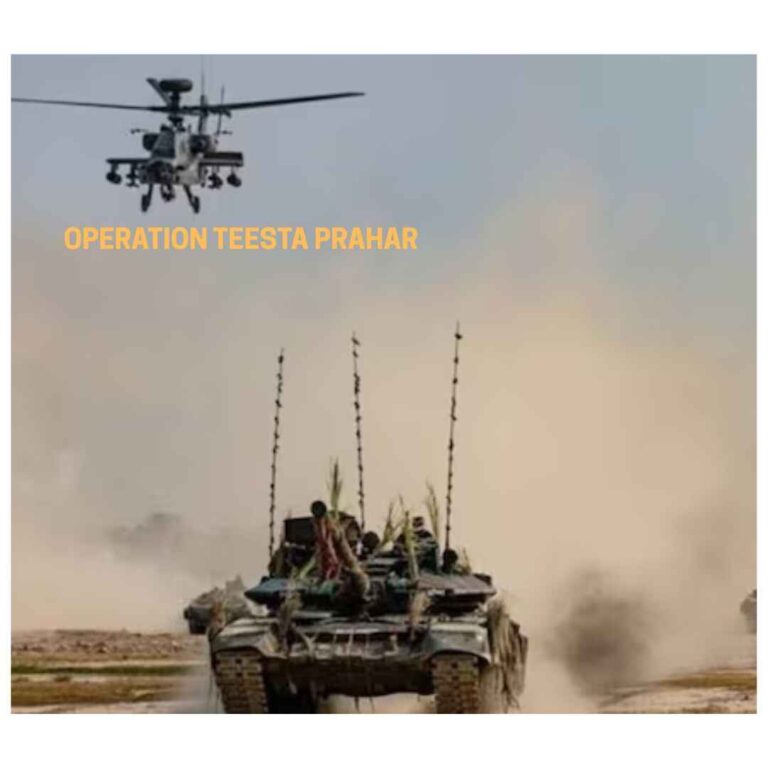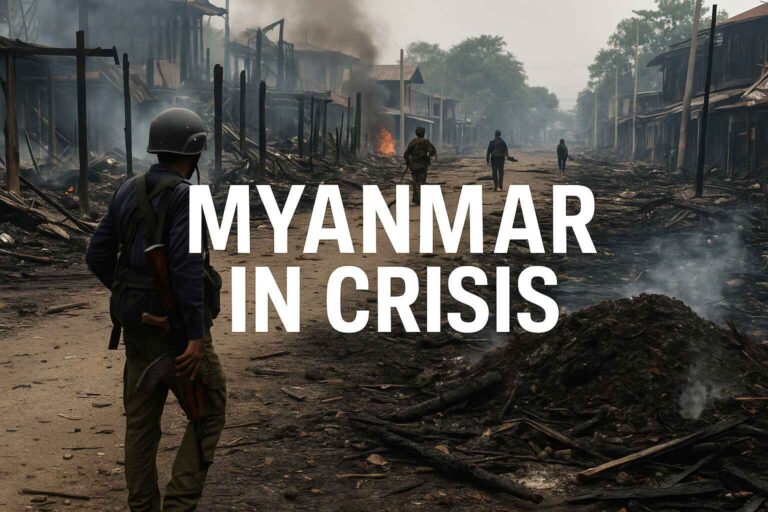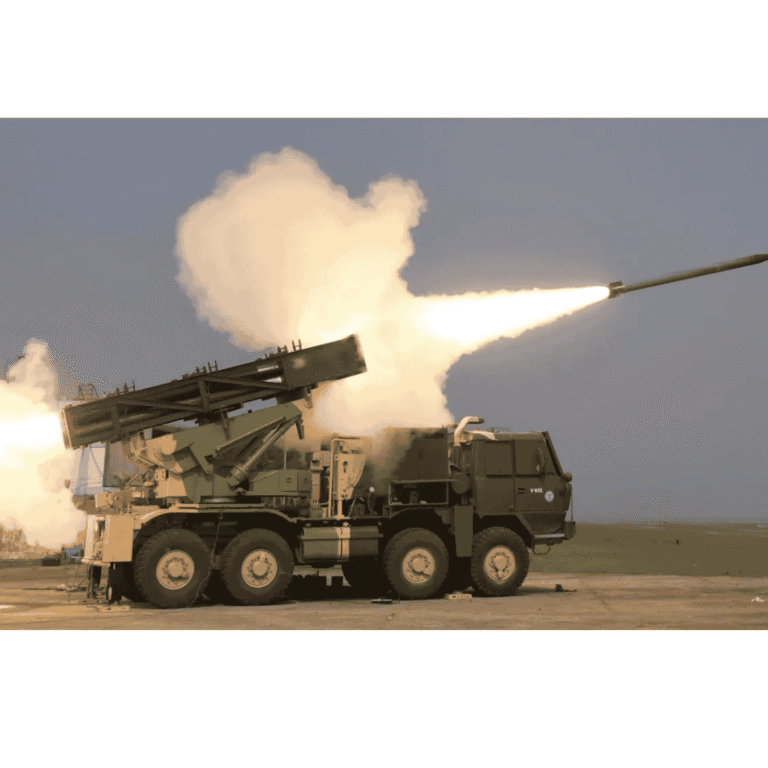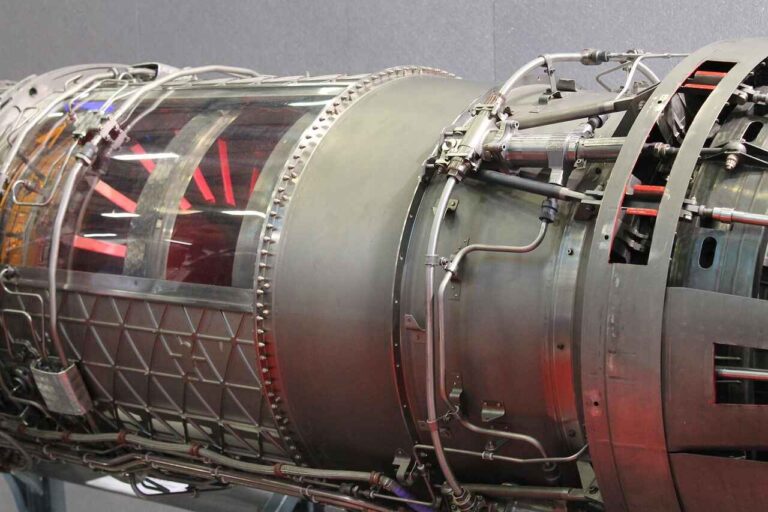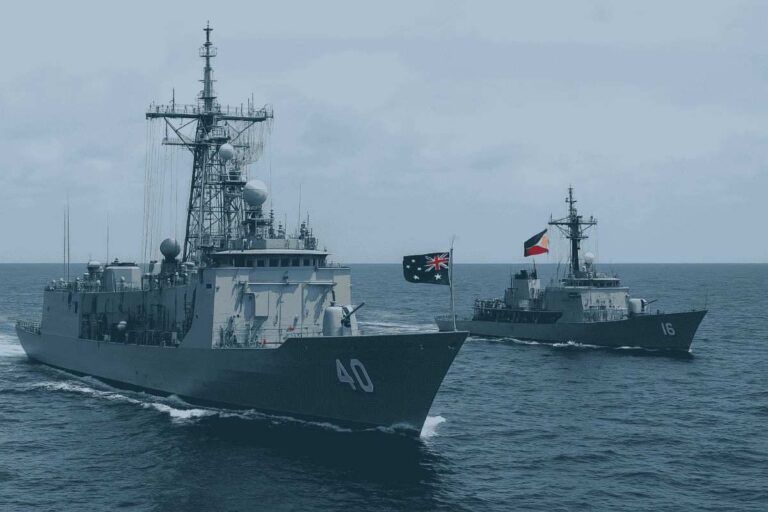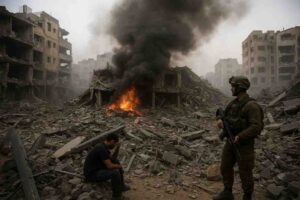On December 8, 2024, the Syrian civil war entered a critical new phase with the dramatic fall of the Bashar al-Assad regime. This turning point came after a swift ten-day offensive spearheaded by a coalition of rebel forces, including the Islamist militant group Hayat Tahrir al-Sham (HTS) and the Turkish-backed Syrian National Army (SNA). The offensive, which began with the capture of Aleppo on November 30, culminated in the takeover of Damascus and the flight of President Assad to Moscow.
The collapse of over fifty years of Assad family rule has thrown Syria into a state of flux. Despite the significance of this event, the broader dynamics of the conflict remain as fragmented as ever, with no single faction commanding full control. This article examines the implications of Assad’s fall, the key actors shaping Syria’s future, and the broader regional ramifications.
The successful rebel advance marked a stark shift in a war that had seen relative stagnation in recent years. Key to the operation’s success was the collaboration between Hayat Tahrir al-Sham and Syrian National Army, whose combined forces outmaneuvered the Syrian Arab Army. The failure of Assad’s traditional allies Russia, Iran, and Hezbollah to provide significant reinforcements during the offensive underscored a waning commitment to his regime amid shifting regional priorities.
Turkey’s role in supporting the Syrian National Army highlights its enduring influence in northern Syria and its strategic ambitions to shape the post-Assad landscape. Meanwhile, Iran and Hezbollah, though not overtly involved in countering the offensive, remain significant actors capable of destabilizing the region to protect their interests.
The fall of the Assad regime has not brought peace to Syria but rather exacerbated its already deep divisions. The Kurdish-dominated Syrian Defense Forces (SDF) maintain control over northeastern Syria but face increasing tensions with Arab tribes accusing the group of ethnic discrimination. Simultaneously, Turkey and its allied proxies continue their offensive against Kurdish positions, adding another layer to the multifaceted conflict.
The resurgence of the self-proclaimed Islamic State (IS) is another alarming development. Exploiting the vacuum created by factional fighting, IS has retained a foothold in parts of Syria, launching attacks and posing a renewed threat to regional security.
Israel’s role in the Syrian conflict has grown more pronounced in recent months. Since the October 2023 Hamas attack, Israel has intensified its strikes on Iranian and Syrian military targets, including high-profile attacks on the Damascus and Aleppo airports. These actions signal Israel’s intent to curtail Iranian influence in Syria and prevent the establishment of advanced military infrastructure near its borders.
Origins of the Conflict
The roots of the Syrian conflict lie in decades of authoritarian rule by the Assad family. Since 1970, when Hafez al-Assad seized power, Syria operated as a one-party state dominated by the Ba’ath Party and supported by a network of loyalists and a powerful security apparatus. Hafez’s son, Bashar al-Assad, succeeded him in 2000, promising reform but instead perpetuating authoritarianism, economic inequality, and sectarian favoritism.
The Syrian conflict, now in its thirteenth year, continues to serve as a focal point of geopolitical contestation and humanitarian devastation. What began as a peaceful uprising against President Bashar al-Assad’s regime in 2011 quickly escalated into a multifaceted civil war. The conflict has drawn in regional and international powers, transforming Syria into a proxy battlefield for competing interests, while the civilian population bears the brunt of the violence and displacement
The Syrian conflict originated as part of the broader Arab Spring uprisings, with demonstrators calling for political reforms and an end to corruption. The Assad regime’s violent crackdown on these protests escalated tensions, leading to an armed rebellion. By 2012, the conflict had evolved into a full-scale war, marked by fierce clashes between the Assad-led government, backed by Russia and Iran and a fractured opposition supported by the United States and regional allies, including Turkey, Saudi Arabia, and the United Arab Emirates (UAE).
Complicating matters further, extremist groups such as the Islamic State (IS) seized the opportunity to exploit the chaos, adding a layer of counterterrorism to
Key Dimensions of the Conflict
The Islamic State and Coalition Campaigns
The Islamic State emerged as a dominant force in Syria in 2013, controlling vast swathes of territory by mid-2014. Following a string of terrorist attacks across Europe, the U.S-led coalition expanded its air campaigns against IS targets in Syria, supporting ground operations by the Kurdish-dominated Syrian Democratic Forces (SDF). By 2019, IS had lost 98% of its territory in Iraq and Syria, including key cities such as Raqqa and Deir al-Zour.
Government-Opposition Dynamics
With steadfast support from Russia and Iran, the Assad regime steadily regained control over opposition-held areas, achieving critical victories in Aleppo (2016) and other urban centers. Opposition forces retained a foothold in Idlib and along the Iraq-Syria border, but their capacity for governance was severely undermined by sustained assaults and the devastating 2023 Turkey-Syria earthquake.
Turkish Interventions
Turkey has played a dual role in the conflict, supporting anti-Assad factions while simultaneously targeting Kurdish forces near its border. Since 2016, Turkish military operations have sought to counter the perceived threat from armed Kurdish groups aligned with the Syrian Democratic Forces .
External Actors and Proxy Dynamics
The Syrian conflict has become a proxy battleground for regional and global powers:
- Russia and Iran: Instrumental in bolstering Assad’s regime, providing air support and deploying private military contractors like the Wagner Group.
- United States: Initially focused on supporting opposition forces and countering IS, the U.S. largely withdrew its troops by 2019, leaving behind a contingency force of 400 personnel.
- Turkey: Pursues a strategic agenda against Kurdish forces while maintaining influence in northern Syria.
- Israel: Regularly conducts airstrikes on Iranian and Hezbollah targets in Syria to counter perceived threats to its national security.
Syria at the Crossroads of Crisis
Syria’s protracted conflict, exacerbated by natural disasters and regional instability, continues to highlight the country’s strategic significance and humanitarian plight. The events of 2023 and 2024 demonstrate how deeply embedded Syria’s challenges are within regional and global dynamics, making the nation a focal point of international attention.
On February 6, 2023, a devastating 7.8-magnitude earthquake, followed by a 7.5-magnitude aftershock, struck southeastern Turkey and northwestern Syria. The toll was catastrophic, with an estimated 60,000 casualties, including 8,400 in Syria. The disaster compounded the pre-existing devastation of over a decade of civil war, leaving Syria’s relief capabilities stretched to the breaking point.
The worst-affected region in northwest Syria remains under rebel control, complicating international relief efforts. The Syrian government’s long-standing restrictions on aid to rebel-held territories delayed critical humanitarian assistance. The Bab al-Hawa crossing, the sole humanitarian aid corridor between Turkey and Syria, was rendered nearly inoperable due to damaged infrastructure, further delaying relief convoys. Although the Syrian government eventually allowed limited international aid access to opposition areas, the response remained sluggish, exacerbating the humanitarian crisis.
The earthquake’s economic toll has been severe, with damages estimated at $5.1 billion in Syria. This has left the already fragile Syrian economy grappling with reconstruction challenges amidst ongoing sanctions and limited international support.
Geopolitical Dynamics and Shifting Alliances
In the months following the earthquake, Syria witnessed significant diplomatic developments. In May 2023, Iranian President Ebrahim Raisi visited Damascus to bolster economic cooperation, marking a notable deepening of ties between Tehran and Damascus. The visit highlighted Iran’s enduring influence in Syria, particularly as other international actors reassessed their involvement.
That same month, the Arab League re-admitted Syria after a twelve-year suspension. While this move signaled a shift in Arab engagement with Syria, Western sanctions on President Bashar al-Assad’s regime persisted, limiting the scope of economic recovery and deterring significant investment from oil-rich Arab states.
Simultaneously, Iraq’s Prime Minister Mohammed Shia al-Sudani engaged with Syria on key issues such as drug trafficking, refugee repatriation, and the easing of sanctions. These discussions underscored the broader regional implications of Syria’s instability.
Escalation of Military Activities
Throughout 2023, Syria remained a battleground for multiple conflicts. The self-proclaimed Islamic State intensified its attacks, exploiting Syria’s fragmented governance and vast desert regions. High-profile incidents, such as the ambush of a bus carrying Syrian soldiers in Deir Ezzor, highlighted the group’s persistent threat.
Meanwhile, Israel escalated its military operations in Syria, targeting Iran-linked positions. These strikes, including significant attacks on the Damascus and Aleppo airports, increased following Hamas’s October 2023 assault on Israel. By December 2023, Israeli strikes had reportedly killed several high-ranking members of Iran’s Islamic Revolutionary Guard Corps (IRGC), including key intelligence officials.
In response, Iran-backed militias in Syria and Iraq launched retaliatory attacks against U.S. positions. Since mid-October 2023, over 165 such attacks have targeted American forces in the region, underscoring the intensifying proxy war dynamics. The U.S. retaliated with a series of strikes in February 2024, targeting over 85 sites in Iraq and Syria linked to these militias. These operations reflect the broader U.S. strategy to counter the resurgence of extremist groups while maintaining a deterrent posture against Iran-backed actors.
The Humanitarian Crisis: A Bleak Reality
The humanitarian toll of Syria’s crisis remains staggering. According to the United Nations, 7 out of 10 Syrians require humanitarian assistance. Over 6.9 million people are internally displaced, while 5.4 million have sought refuge abroad, primarily in neighboring countries such as Turkey, Jordan, and Lebanon. The refugee influx has strained regional resources and infrastructure, further destabilizing the broader Middle East.
Efforts to address the humanitarian crisis are complicated by Syria’s fragmented governance. Rebel-held regions, Kurdish-controlled areas, and territories under Assad’s regime each present unique challenges to aid delivery. The ongoing violence, coupled with natural disasters, has left international organizations struggling to meet the growing needs of the Syrian population.
The Fall of Assad’s Regime
In a historic turn of events, Syrian rebels captured Damascus unopposed on Sunday, marking the end of President Bashar al-Assad’s 13-year civil war and his family’s six-decade autocratic rule. Assad fled to Russia, with Moscow granting asylum to him and his family. This seismic shift reshapes the regional balance of power, curbing Iranian and Russian influence in the Arab world and heralding a potential return for millions of refugees displaced by the protracted conflict.
The fall of Assad’s regime signifies the culmination of years of struggle, with rebels backed by Turkey and buoyed by jihadist Sunni movements, achieving a swift and decisive victory. The collapse dismantles a regime long notorious for political repression and brutality, paving the way for a new chapter in Syrian history.
Abu Mohammed al-Golani, the rebel commander who has emerged as a key figure in this transition, addressed thousands at Damascus’ Umayyad Mosque, framing the victory as a regional watershed moment. “A new history is being written… Syria will become a beacon for the Islamic nation,” he proclaimed. The rebel coalition is now tasked with transitioning Syria from decades of autocracy to a democratic system.
The fall of Damascus unfolded with remarkable speed. Assad’s forces abandoned their positions, and checkpoints lay deserted. Inmates flooded the streets as rebel forces broke open prisons, while looters targeted symbols of the regime’s wealth and power. Assad’s gilded presidential palace was defaced, and his image once omnipresent was torn down across the capital.
Celebrations erupted, but the mood was tempered by the enormity of the challenges ahead. A transitional governing body has been proposed to oversee the shift to stability and democracy, but deep divisions and the sheer scale of reconstruction loom large.
Implications for the Arab World
The sudden collapse of Assad’s regime has sent shockwaves through the region. Long a bastion of Russian and Iranian influence, Syria now represents a loss for these two powers, both strategically and symbolically. Iran’s once-unimpeded weapons supply lines to its regional allies, including Hezbollah, are now in jeopardy, while Russia’s Mediterranean naval base in Tartus may face an uncertain future.
For Arab capitals, the developments in Damascus have been met with a mix of joy and apprehension. The Arab League, which recently readmitted Syria, must now navigate the complex dynamics of a post-Assad era. Meanwhile, Israel, which has repeatedly targeted Iranian-linked entities in Syria, claimed credit for weakening Assad’s regime and its allies.
What Next After the Fall of Assad’s Regime?
The collapse of Bashar al-Assad’s regime marks a seismic shift in the Middle East, ending an era of authoritarian rule that spanned over half a century under the Assad family. While the departure of Assad provides Syrians with a glimmer of hope for a future of dignity, stability, and governance, it also introduces a labyrinth of regional and global challenges that must be navigated with precision and foresight.
The Immediate Aftermath: Internal Dynamics in Syria
The fall of the Assad regime has left a governance vacuum, raising immediate questions about who will control the nation’s political and territorial landscape. The ascendance of Hayat Tahrir al-Sham , led by Abu Mohammed al-Jolani, as the dominant force highlights a precarious reality. While Jolani’s rhetoric around minority rights and rebuilding Syria offers optimism, Hayat Tahrir al-Sham’s record of human rights abuses and its designation as a terrorist organization by both Turkey and the United States underline significant risks.
The collapse of the Syrian military, crippled by corruption, criminality, and reliance on the amphetamine trade further complicates the landscape. Efforts to rebuild a national military under professional defectors may provide a pathway toward stability, but this requires careful coordination among domestic actors and external stakeholders.
Regional Implications: A Shifting Power Balance
Iran and Hezbollah
Iran’s loss of Assad represents a major blow to its regional influence. For Tehran, Syria was not just an ally but a critical land bridge to Hezbollah in Lebanon, enabling the supply of arms and funds to the militant group. The weakening of Hezbollah due to financial and territorial losses in Syria compounds this setback, potentially altering the power dynamics in Lebanon and diminishing Iran’s ability to project power across the Levant.
However, Iran’s strategy may shift toward asymmetric operations and fostering alliances with local proxies within Syria. This could lead to the proliferation of armed groups vying for influence, exacerbating instability and complicating peacebuilding efforts.
Turkey’s Role
Turkey emerges as a pivotal player in post-Assad Syria. Ankara’s support for the rebel offensive appears driven by both geopolitical and domestic priorities, particularly the safe return of millions of Syrian refugees. Yet, Turkey must tread carefully to ensure that Hayat Tahrir al-Sham’s governance does not exacerbate sectarian tensions or trigger new waves of displacement.
Ankara’s ability to influence Hayat Tahrir al-Sham and its willingness to collaborate with international actors, including the United States, will be critical in shaping Syria’s trajectory. A delicate balance is needed to manage its bilateral tensions with Washington over the Kurdish-led Syrian Democratic Forces while addressing broader regional concerns.
Israel’s Strategic Calculus
Israel’s longstanding security concerns regarding Iran’s presence in Syria and Hezbollah’s activities remain acute. While the fall of Assad reduces Iran’s foothold, it introduces uncertainties about who will govern Syria’s southern border regions. Any rise of Islamist factions hostile to Israel could compel Tel Aviv to adopt more aggressive postures, potentially leading to heightened tensions along the Golan Heights.
Gulf States’ Positions
The Gulf Cooperation Council (GCC), particularly Saudi Arabia and the UAE, faces a dilemma. While the removal of Assad aligns with their broader opposition to Iranian influence, the empowerment of Hayat Tahrir al-Sham and other Islamist factions poses a direct challenge to their secular governance models. Abu Dhabi’s skepticism regarding Turkish involvement underscores broader regional rivalries that could hinder cooperative efforts toward Syrian reconstruction.
Global Ramifications: A Test for International Governance
United States
The Biden administration faces a complex balancing act. While the removal of Assad aligns with U.S. strategic interests in countering Russian and Iranian influence, Washington’s ambivalence toward Hayat Tahrir al-Sham reflects legitimate concerns about its Islamist orientation. Direct engagement with Hayat Tahrir al-Sham, albeit cautiously, may become necessary to influence Syria’s transition and safeguard minority rights.
The U.S. must also lead efforts to lift non-targeted sanctions on Syria to enable reconstruction while maintaining pressure on the Assad family and its enablers. Immediate humanitarian assistance and the recovery of stolen assets should be prioritized to stabilize the country and prevent further displacement.
Russia’s Waning Influence
For Moscow, Assad’s fall signals a significant geopolitical loss. Syria had been a cornerstone of Russia’s narrative of great power resurgence, providing a foothold in the Mediterranean and a platform to challenge Western influence. The regime’s collapse undermines this narrative and stretches Russia’s military and financial resources further amidst its ongoing conflict in Ukraine.
Russia’s diminished role, however, creates an opportunity for Western powers to reassert influence in Syria. Collaborative efforts with regional partners such as Turkey and France could establish a framework for transitional governance and security.
The Role of the United Nations
The post-Assad era presents a critical test for the UN’s ability to mediate conflicts and facilitate nation-building. UNSC Resolution 2254 and the Geneva Communique offer a roadmap for a political transition, but their implementation requires unprecedented international coordination. The establishment of a transitional government, constitutional reform, and eventual elections will necessitate robust UN involvement alongside regional and global stakeholders.
Humanitarian Challenges and Refugee Crisis
With over 20 million Syrians displaced or living in precarious conditions, addressing the humanitarian crisis is paramount. The safe and voluntary return of refugees hinges on guarantees of security and justice. Transitional justice mechanisms must be established to address crimes committed by the Assad regime while preventing retaliatory violence against minority communities.
Reconstruction efforts must focus on rebuilding infrastructure, restoring public services, and fostering economic opportunities. International donors, led by the United States and the European Union, must spearhead these efforts while ensuring transparency and accountability to prevent corruption.
The Road Ahead: Opportunities and Risks
The fall of Assad provides Syrians with an unprecedented opportunity to rebuild their nation. However, this path is fraught with challenges. The empowerment of Hayat Tahrir al-Sham and the fragmentation of Syria’s political and military landscape could lead to prolonged instability if not managed carefully.
Collaborative efforts involving regional powers, international organizations, and Syrian stakeholders are essential to establish governance structures that prioritize inclusivity, justice, and the rule of law. Transparency in transitional governance, protection of minority rights, and the disarmament of militias will be critical in preventing a relapse into conflict.
The collapse of Assad’s regime marks the end of one of the darkest chapters in Syria’s history. While the road ahead is uncertain, it also offers a chance for renewal. For the international community, Syria’s transition represents a moral and strategic imperative. Failure to act decisively risks entrenching instability and fostering conditions for extremism. Success, however, could serve as a model for conflict resolution and nation-building in one of the world’s most volatile regions.
Syria’s future now rests in the hands of its people, but their ability to shape a peaceful and prosperous nation will depend on the support and engagement of the global community.

